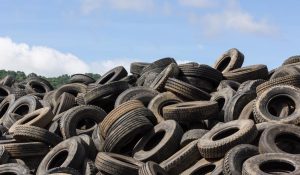global tyre industry
One of the enigmas of the global tyre industry is to find the perfect balance between profitability and sustainability. This is a difficult task, requiring the cooperation of all stakeholders in the value chain from research to manufacturing.
Several ways are being explored to achieve this goal. Some of them are supply and demand alterations, as well as through the three ‘R’s: Recycle, Reduce and Reuse.

Recycling is an efficient and economical way to use up a product’s material and energy. It is also an important step to reducing the carbon footprint of a product and creating jobs in communities around the world.
One of the enigmas of the global tyre industry
There are a number of ways that tyres can be recycled, including the creation of new tires from used tire rubber or the recovery of a portion of their raw materials. These efforts are aimed at helping the global tyre industry create products that last longer and do not need to be replaced as often, while also minimizing the environmental impact of the production process.
Tires are used in many ways beyond the automotive sector, so it’s critical that they are reused after they have reached their end of life. This includes using them in the construction of roads and landfills as well as shredded tires for use as sand or clay replacements in the construction of buildings, sewer fields and other infrastructure projects.
Some companies are taking the concept of reuse even further. For instance, Michelin is aiming to incorporate waste plastic into its tires by 2024. This project will allow 4 billion polyethylene terephthalate bottles to be recycled instead of being thrown out and will also help lower carbon emissions.
Another area of focus is expanding sources for natural rubber, the material that makes up the majority of tires. A lot of this comes from hevea rubber trees, but as the climate changes and the hevea tree population declines, tire makers are looking into other sources for NR.
Other NR alternatives include guayule and sunflowers, which can produce latex similar to that found in hevea NR. Bridgestone Americas is researching how to increase the NR content in sunflowers, while Edison Agrosciences Inc. is studying a desert shrub that yields NR-like properties.
As part of its Tires4ward program, Bridgestone Americas provides free collection and recycling for end-of-life tires during community-organized cleanup events across the United States. This helps eliminate tire piles that can burn for years, releasing pollutants into the air and water.
Tires can be repurposed into a variety of products, from sand and clay replacements to energy-efficient electric arc furnaces and professionally engineered tire bales. In addition to these applications, tires can also be repurposed into a range of consumer goods, from car parts to shoes.